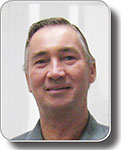Pluto—a major gas field hidden beneath the continental slope
Larry A Tilbury A , Chris J Clayton A , Tim J Conroy A , Giles Philip A , Georgia A Boyd A , Glen A Johnson A , Mark A Rayfield A , Lina Hartanto A and Dane P Lance AWoodside Energy
The APPEA Journal 49(1) 243-268 https://doi.org/10.1071/AJ08015
Published: 2009
Abstract
The Pluto gas field, North West Shelf of Australia, was discovered in April 2005. It is located in production licence area WA-34-L some 190 km northwest of Karratha, and is situated beneath the continental slope in water depths of 400–1,000 m.
The seabed topography initially hindered the recognition of this field. The presence of large seabed channels and steep dips in the overburden, together with the variable water depth, result in seismic ray-bending effects which reduce the quality of imaging and attenuate amplitudes over the southern and eastern parts of the field. Consequently the depth conversion of seismic data over the Pluto structure has been a key uncertainty for the field definition.
Structurally, the trap is a tilted fault block, bounded on the west and north by major bounding faults, and sealed by overlying regionally extensive shales. The Triassic reservoir sequence dips gently to the east, and subcrops against the regional Jurassic Unconformity.
Pluto–1 encountered a gross gas column of around 209 m in Triassic sands of the Mungaroo Formation and Tithonian sands, sealed by Cretaceous shales of the Forestier and Muderong formations. Petrophysical analyses of the conventional wireline dataset confirmed an average net porosity of 28% and average gas saturation of 93% for the Mungaroo Formation (Lower E Unit). Production tests proved the high deliverability of the Mungaroo E Unit (46.5 MMscf/d) but showed the Tithonian section to be of poor deliverability (9.5 MMscf/d with possible in-wellbore leakage from the deeper Mungaroo DST).
Since the discovery, five appraisal wells (excluding sidetracks) have been drilled to delineate the accumulation, and to target areas of higher quality sand development for optimisation of development well locations. In addition, the Pluto 3D data has been twice processed to a pre-stack depth migration—once, immediately following the Pluto–1 discovery to aid in the appraisal campaign and then again following final investment decision (FID) to take advantage of new and improved techniques for seismic processing which has led to increased confidence in the proposed development well locations.
The Xena gas field, a satellite field adjacent to Pluto, was discovered by Xena-1ST1 in September 2006. Since then a further two appraisal wells have been drilled to delineate the structure and define the accumulation.
The Triassic reservoir section has been extensively cored, logged and analysed in detail for reservoir characterisation and correlation. The reservoir is composed of thickly developed, amalgamated fluvial multi-valley sandstones of the Mungaroo Formation, and coastal plain sediments (tidal bars and channels, estuarine beach deposits) of the more tidally influenced Brigadier Formation.

Larry Tilbury graduated from the University of WA in 1971 with a BSc (Hons) in Physics and Mathematics. His working career spans more than 35 years, including 10 years (1971–81) as a geophysicist in the Marine Group of the BMR where he worked in acquisition, processing and interpretation in most of the offshore basins of Australia, and more than 25 years with Woodside (since 1981), working as an interpreter in exploration and development on the North West Shelf of Australia and the Gulf of Mexico. He is principal geophysicist in the Pluto Development Subsurface Team. His main interests are 3D interpretation, in particular image processing and lateral prediction for reservoir characterisation. Member: SEG, ASEG, PESA, EAGE and SPE larry.tilbury@woodside.com.au |

Chris Clayton graduated from the University of Durham in 1988 with a BSc (Hons) in geology. He completed a PhD at the University of Cambridge on the sedimentology of a Silurian age deep marine sequence in mid Wales. He joined Shell in 1993 working in the research lab in The Netherlands on core studies and reservoir modelling before transferring to Woodside in 1997 as a reservoir geologist working on Lambert and Hermes oil fields, Sunrise gas field and the Ohanet project in Algeria. Chris returned to Shell in 2002 as the reservoir modelling lead for Shell in New Orleans, before joining Woodside in 2005 to work in the Pluto asset. Chris was the team development geologist for Pluto in the period leading up to FID, before transferring to his present position of subsurface team leader. His main areas of interest are in sedimentology, reservoir modeling and field development planning. chris.clayton@woodside.com.au |

Tim Conroy graduated from the University of Adelaide in 1996 with a BSc (first class Hons, geology). While studying the continental shelf of WA, he discovered three bryozoan species. He joined Santos in 1997 working the Dullingari Field, Otway exploration and rock typing. He joined Shell International in 2001, based in The Netherlands and Ireland, as an exploration petrophysicist working the southern North Sea and Atlantic margin. He joined Woodside in 2004 working in Libya rock typing wells from the Murzuq and Sirte. He was a member of the exploration team which discovered Pluto in 2005. He is now the lead petrophysicist for Pluto and Xena fields. His area of interest is rock log calibration. Member: SPE, FESAUS. tim.conroy@woodside.com.au |

Giles Philip graduated from Oxford University in 1991 with a MA (Hons) in earth sciences. He then completed a PhD at Reading University on clastic diagenesis. He joined Shell International in The Netherlands, in 1995 and worked on integrated core studies, reservoir modelling and training for many of Shell’s operating units. In 1999 he moved to Woodside Energy as a Development Geologist in the Northwest Shelf Venture, focussed on Goodwyn. In 2003, Giles moved to Shell Malaysia E&P and worked on oil projects offshore Sabah. He rejoined Woodside in 2005, and has since worked on the Thylacine (Otway Basin) and Pluto projects. Prime interests are reservoir modelling, sedimentology, diagenesis and field development planning. Member of SPE, AAPG, IAS and SEPM. giles.philip@woodside.com.au |

Georgia Boyd graduated with a BSc (Hons) degree at Victoria University of Wellington in 1999 and received a PhD in geology from the University of Melbourne in 2005. Her PhD thesis studied the formation and mineralogy of berthierine ooids found within the Sherbrook Group sediments of the Otway Basin in southeastern Australia. She worked as a geoscientist on the Woodside graduate program from 2005 to 2008, during which time she worked on numerous projects in both exploration and development. She is now working as a geologist within the Pluto Development Subsurface Team. Her main interests include sedimentology, diagenesis and reservoir modelling. Member: PESA. georgia.boyd@woodside.com.au |

Glen Johnson graduated from the University of Waterloo in 1980 with a BASc (chemical engineering). He started his career as a reservoir engineer with PetroCanada working on a range of assets in the Canadian Western Sedimentary Basin. He joined Santos in 1985 and subsequently worked most of the company’s Australian onshore fields, addressing field development, reservoir management and compression project coordination. Glen has been with Woodside Energy since 1997, spending most of the time on development, reservoir management and system optimisation of the company’s large offshore gas fields. He has also been corporate reserves coordinator and reservoir engineering discipline head and has a special interest in uncertainty management. Glen is now reservoir development manager for the large Browse Basin LNG Development. Member: SPE, APEGGA. glen.johnson@woodside.com.au |

Mark Rayfield graduated from Imperial College in 1990 with an MEng in Petroleum Engineering. He joined Marathon in the UK and worked on the development of West, North and East Brae concentrating on reservoir management through compositional simulation to direct development drilling. In 1998 he moved to Woodside working in NWSV forecasting group, through start up on Laminaria oil project and appraisal on the Chingeutti and Tiof fields, offshore Mauritania. His main interests are in appraisal and field development planning and efficient use of reservoir simulation. Member: SPE. mark.rayfield@woodside.com.au |

Lina Hartanto graduated with a BEng (Hons) degree in 1998 and gained a PhD degree in petroleum engineering from Curtin University of Technology in 2005. Her PhD thesis was on different scales and integration of data in reservoir simulation. She joined Roxar Pty Ltd (Australia) in 1998 and worked on the reservoir characterisation and modelling. She then moved to Woodside in 2001 integrating the NWS gasgathering system models and performing reservoir simulation for various development projects such as Goodwyn, Wanaea and Pluto. She is now working as senior reservoir engineer with the project development team to support various assets in reservoir simulation. Her main interests include dynamic reservoir modelling, reservoir management and field development planning. Member: SPE. lina.hartanto@woodside.com.au |

Dane Lance graduated from the University of WA in 2004 with a BSc in physics and a BEng in mechanical engineering, with respective first class honours dissertations on laser spectroscopy and metrology, and finite element algorithms. He started on the Woodside graduate program as an engineer in 2005 working in operations across several producing assets on the North West Shelf, moving onto the Pluto development in 2006 in the period leading up to FID. He is now reservoir engineer with the Pluto Development Subsurface Team. Interests include reservoir characterisation and modelling and field development planning. Member: SPE. dane.lance@woodside.com.au |


